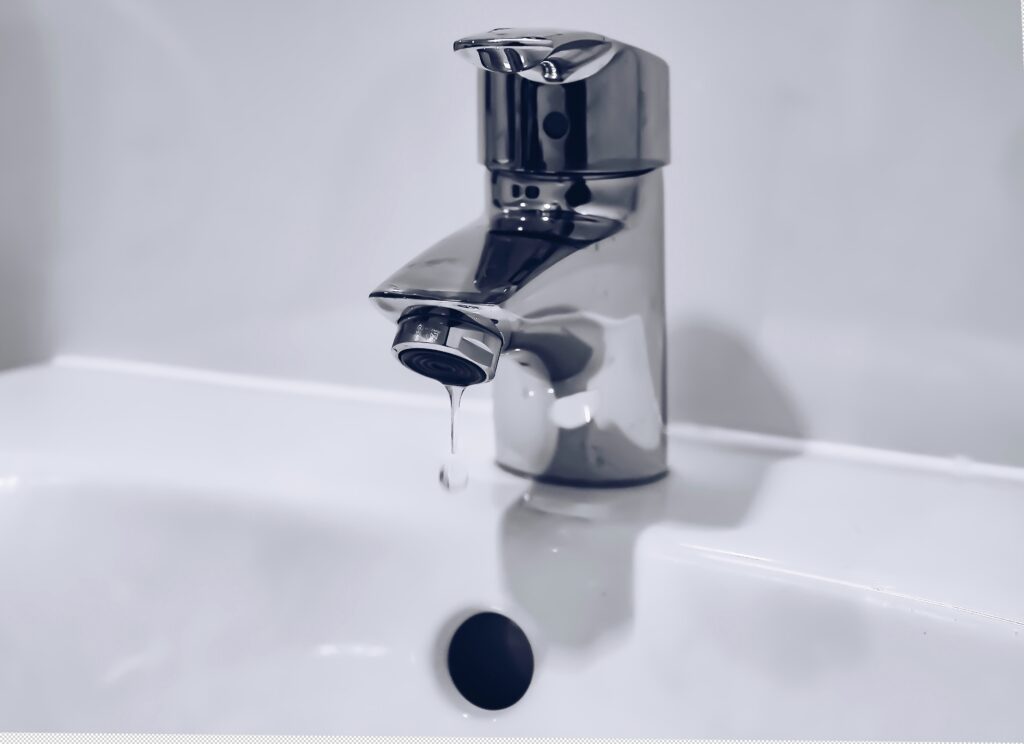As a homeowner, I’ve learned that some of the most costly home repairs aren’t the ones we see coming — they’re the ones quietly happening behind the scenes. These hidden home repairs can creep up without an warning, leading to bigger (and pricier) problems down the road. From slow leaks to fading caulk, small cracks, & neglected vents, these issues like to hide in plain sight until it’s too late. The good news? You don’t need to be a professional contractor to handle most of them. Whew! With a little awareness, patience, and a few basic tools, you can save yourself hundreds of dollars while keeping your home in great shape. Let’s uncover the hidden home repairs every homeowner misses — and how you can fix them yourself with confidence.

The Silent Drip: Leaky Faucets and Pipes
One of the easiest hiden home repairs to overlook is a small leak under the sink or behind a wall. You might not even notice it until you see a damp cabinet or a water stain on drywall. That steady drip isn’t just annoying — it can waste gallons of water each day & drive up your utility bill.
To fix it, start by checking the source. Tighten any visible connections under the sink, and if that doesn’t stop the leak, replace the rubber washer or O-ring inside the faucet handle. Most local hardware stores carry faucet repair kits for just a few dollars, and they’re simple enough to install with a wrench and screwdriver. Regularly checking for moisture under sinks or behind toilets can help you catch these leaks before they become expensive repairs.
Crumbling Caulk and Failing Seals
Another hidden home repair that often flies under the radar is deteriorating caulk. It’s one of those details we tend to ignore until water starts finding its way behind tiles or windows. Worn-out caulk around tubs, sinks, and showers can cause mold growth and rot — both of which are expensive to fix later.
Thankfully, recaulking is one of the easiest DIY fixes around. Start by removing the old caulk with a utilit knife or scraper, then clean the surface thoroughly to remove any soap scum or mildew. Once dry, apply a smooth bead of waterproof bathroom caulk and use a damp finger to press it into the joint. Allow it to cure for at least 24 hours. The entire job takes less than an hour and costs under $10, but it can prevent hundreds in water damage down the road.
Gutter Gunk and Hidden Water Damage
If you’ve ever skipped cleaning your gutters, you’re not alone. But clogged gutters are one of the most common sources of hidden water damage around a home. When water can’t flow freely, it spills over the edges and seeps into your roof, fascia boards, and even your foundation.
To fix this, grab a sturdy ladder and a pair of gloves, then scoop out leaves and debris from the gutters. Rinse them clean with a garden hose, and make sure downspouts are directing water at least six feet away from the house. For added protection, install inexpensive gutter guards to keep debris from building up. A little seasonal maintenance can save you from costly roof repairs or basement flooding later.
Drafty Windows and Wasted Energy
Another common hidden issue is air leaking around windows and doors. Over time, weatherstripping and seals wear out, letting drafts creep in and forcing your heating and cooling systems to work harder. You might notice higher energy bills without realizing your windows are to blame.
To fix this, run your hand around window and door frames to feel for air leaks. If you detect a draft, replace the worn weatherstripping or apply new sealant around the frame. You can also use a removable caulk or foam seal during colder months for extra insulation. According to Energy.gov, sealing leaks can reduce your energy bills by up to 20%, making this small fix one of the most rewarding DIY repairs you can do.
Dryer Vents and Hidden Fire Hazards
One of the most dangerous hidden home repair is your dryer vent. Lint buildup inside the vent hose obstructs airflow and can cause your dryer to overheat — this is a leading cause of house fires. You may not see the buildup, but if your clothes take longer to dry, it’s a warning sign that your vent is clogged.
To clean it, unplug the dryer and detach the vent hose. Use a long dryer vent brush or a vacuum attachment to remove lint from the hose and the vent opening on the exterior of your home. For best results, clean your dryer vent every six months. It’s a simple DIY task that can prevent major damage and even save lives. For more fire prevention tips, check out the National Fire Protection Association
The Hidden Cost of Ignoring Small Repairs
Ignoring hidden home repairs can lead to much bigger expenses later. A slow leak can rot wood, a loose vent can invite pests, and unsealed cracks can lead to mold growth or structural damage. The best way to protect your investment is to make inspection part of your routine. Take a walk around your home every month — inside and out — and look for signs of wear. Small, regular checkups can save you thousands of dollars in repairs and help your home stay comfortable, safe, and energy-efficient.
Conclusion: Becoming Your Home’s Best Handyman
Owning a home comes with surprises, but they don’t have to be costly. Pay attention to the little things — a drafty window, a slow drip, a missing bead of caulk — you can prevent hidden damage from taking root. I’ve learned that most hidden home repairs aren’t as intimidating as they seem. With a little time and care, you can tackle these fixes yourself. The satisfaction that comes from solving problems on your own is worth every bit of effort — and your home will thank you for it!
